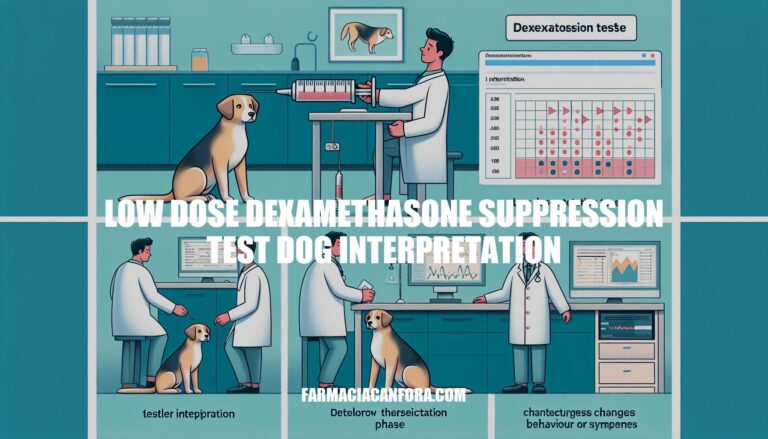


The low dose dexamethasone suppression (LDDS) test is a crucial diagnostic tool in veterinary medicine, primarily used to diagnose hyperadrenocorticism (Cushing’s disease) in dogs. By administering a small dose of dexamethasone, a synthetic cortisol, and measuring the cortisol levels at specific intervals, veterinarians can assess the dog’s adrenal function. This test helps differentiate between normal and abnormal cortisol production, aiding in the identification of Cushing’s disease and determining its type. Its high sensitivity makes it a reliable choice for early detection and effective management of this endocrine disorder.
Here are the steps for conducting the low dose dexamethasone suppression test in dogs:
This test helps in diagnosing conditions like Cushing’s syndrome by evaluating the cortisol levels at these specific intervals.
The low dose dexamethasone suppression test (LDDS) in dogs involves measuring cortisol levels at baseline, 4 hours, and 8 hours after administering dexamethasone. Here are the criteria for interpreting the results:
Normal Response:
Abnormal Response (Suggestive of Hyperadrenocorticism):
Pituitary-Dependent Hyperadrenocorticism (PDH):
Adrenal-Dependent Hyperadrenocorticism (ADH):
These criteria help differentiate between normal dogs and those with hyperadrenocorticism, as well as between PDH and ADH.
In dogs undergoing the low dose dexamethasone suppression test (LDDS), typical findings include:
Healthy Dogs: Administration of a low dose of dexamethasone (0.01-0.015 mg/kg) leads to suppression of ACTH secretion and a significant reduction in plasma cortisol concentrations within 2-3 hours, lasting up to 8 hours.
Dogs with Hyperadrenocorticism (HAC):
General Patterns: In dogs with hyperadrenocorticism, the 8-hour cortisol value remains elevated, usually above 30-40 nmol/L. This lack of suppression is a key indicator of the disorder.
These patterns help differentiate between healthy dogs and those with hyperadrenocorticism, as well as between PDH and ADH.
The low dose dexamethasone suppression (LDDS) test is crucial for diagnosing and managing canine hyperadrenocorticism (Cushing’s disease). Here’s a concise explanation:
Diagnosis: The LDDS test helps identify hyperadrenocorticism by measuring cortisol levels after administering a low dose of dexamethasone. In healthy dogs, cortisol levels drop significantly. However, in dogs with hyperadrenocorticism, cortisol suppression is inadequate.
Differentiation: It can distinguish between pituitary-dependent hyperadrenocorticism (PDH) and adrenal-dependent hyperadrenocorticism (ADH). Lack of suppression indicates hyperadrenocorticism, while further tests like endogenous ACTH levels help differentiate between PDH and ADH.
Management: The test is also used to monitor the effectiveness of treatments like trilostane or mitotane by assessing cortisol suppression over time.
This test is highly sensitive and specific, making it a valuable tool in the clinical management of canine hyperadrenocorticism.
The low dose dexamethasone suppression (LDDS) test is a crucial diagnostic tool for canine hyperadrenocorticism, enabling veterinarians to accurately diagnose and differentiate between pituitary-dependent and adrenal-dependent forms of the disease.
Accurate interpretation of LDDS results is essential in veterinary practice as it directly impacts treatment decisions. A correct diagnosis can lead to effective management of Cushing’s disease, while misinterpretation may result in inappropriate treatment or delayed diagnosis.
The test’s high sensitivity and specificity make it a valuable tool for veterinarians to provide optimal care for dogs with hyperadrenocorticism.